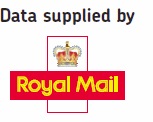 Nearest Store Template Tags
Nearest Store Template Tags
The tags used are:
DetailsTemplate
| Name | Description |
|---|---|
| _yourid_ | Replaced with Your ID,from the database |
| _yourdata1_ | Replaced with Your Data1, from the database |
| _yourdata2_ | Replaced with Your Data2, from the database |
| _yourdata3_ | Replaced with Your Data3, from the database |
| _yourdata4_ | Replaced with Your Data4, from the database |
| _yourdata5_ | Replaced with Your Data5, from the database |
| _yourdata6_ | Replaced with Your Data6, from the database If using filters then can stop details being shown on pin if "NODETAILS" |
| _yourdata7_ | Replaced with Your Data7, from the database |
| _yourdata8_ | Replaced with Your Data8, from the database |
| _postcode_ | Replaced with postcode,from the database |
| _longitude_ | Replaced with Longitude,from the database |
| _latitude_ | Replaced with Latitude,from the database |
| _km_ or _mile_ | Distance from target |
| _dateadded_ | Replaced with date added to the database |
| _rank_ | Replaced with rank count for page of results |
| _type_ | Replaced with type |
| _alphcount_ | Replaced with A,B,C... count for page of results |
HeaderTemplate and FooterTemplate
| Name | Description |
|---|---|
| _recordcount_ | Replaced with record count of results found in list. |
| _pincount_ | Replaced with map pin count of results found in list. |
| _listcount_ | Replaced with number of items in list on current page |
| _nopages_ | Replaced with number of pages of results |
| _pageno_ | Replaced with page number |
| _pageselection_ | Replaced with link to pages [1] [2] [3]... |
| _previouspage_ | Replaced with link to previous page if on page 2 onwards |
| _nextpage_ | Replaced with link to next page if on page 1 to last but one. See example below... |
NextPageURL
| Name | Description |
|---|---|
| _targetpostcode_ | Replaced with Target Postcode in link |
| _page_ | Replaced with Target Page in link See example below... |
Extra Notes on Map Parameters
All the other parameters are used by mapping functions, and can be left blank if map is not needed.
Map Icons for each type code
IconsLocation is optional, but should point to web directory where pin icons can be found. Icons should be named "icon" & type & ".png" so different icons can be used for different types of nearest property. Such as schools etc. If blank will use default Google pin. If type is not used you should give a "icon.png", and "shadicon.png" if shadows are on. [See Example 5]
Target Pin (Query Postcode location)
if ShowTargetPin then displays a ping for the Target Postcode "icontarget.png" (Yellow Pin), and "shadicontarget.png" if shadows are on. [See Example 2 and 3]
Click on Icon to view Details
TargetPin_Details show if user clicks on pins. Leave blank if not needed. Click on target pin in example 2 and 3.
ShowShadowOnPins, if true then uses shadow pins. Uses the same names as other icon with prefix "shad". Therefore "icontarget.png" becomes "shadicontarget.png". If using filter on types then icon for shadow is called "shadiconfilterout.png".
TabTemplate1 template to merge with your data to show details when user clicks on pin. Leave blank to just show pins. [See Example 2]
TabTemplate2-4 extra tabs on pins. Leave blank if not needed. Use tag <tabname>Tab Name</tabname> to define tab names withinTabTemplate1-4. [See Example 3]
Numbered Icons
UseNumberedPins if True then uses "iconx.png" where x is the rank in the results. This allows you to create pins representing 1-10 (or A-Z) and display them which match the text results (using _rank_ or
_alphcount_ tag to match). [See Example 4 and 5]
Altering Pin size
Target_PinIcon_Details,Included_PinIcon_Details and FilteredOut_PinIcon_Details
should be a list of co-ordinates for each type of icon. IconsSizeX, IconSizeY, ShadowSizeX, ShadowSizeY, IconAnchorX, IconAnchorY, InfoWindowAnchorX and InfoWindowAnchorY
ExtraFlags
ExtraFlags allows extra functionality, as listed below:
| Name | Description |
|---|---|
| NOSCALE | removes scale on Google map. |
Each value should be separated by comma
